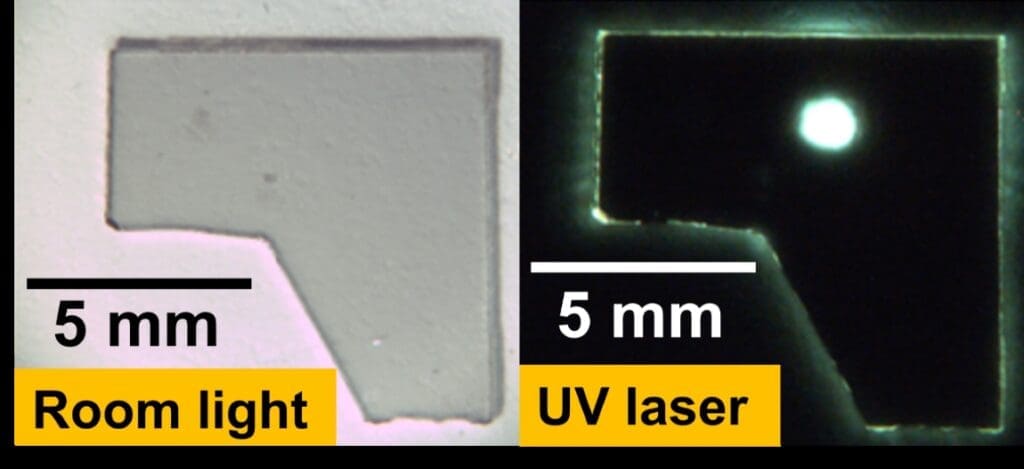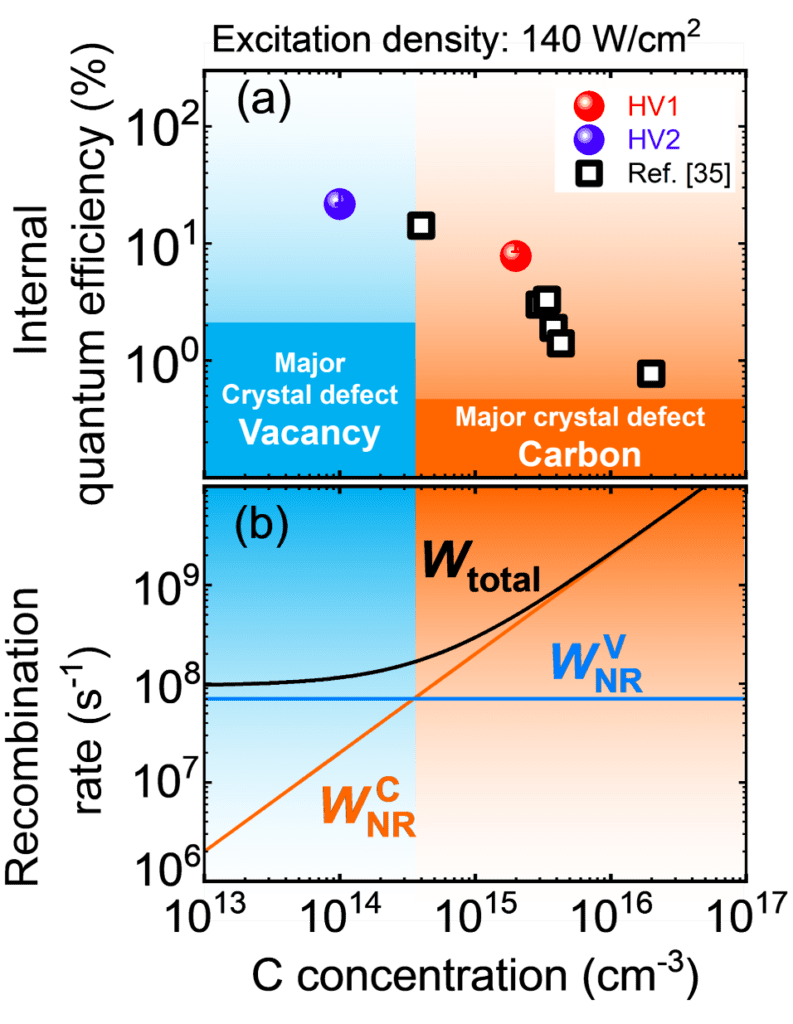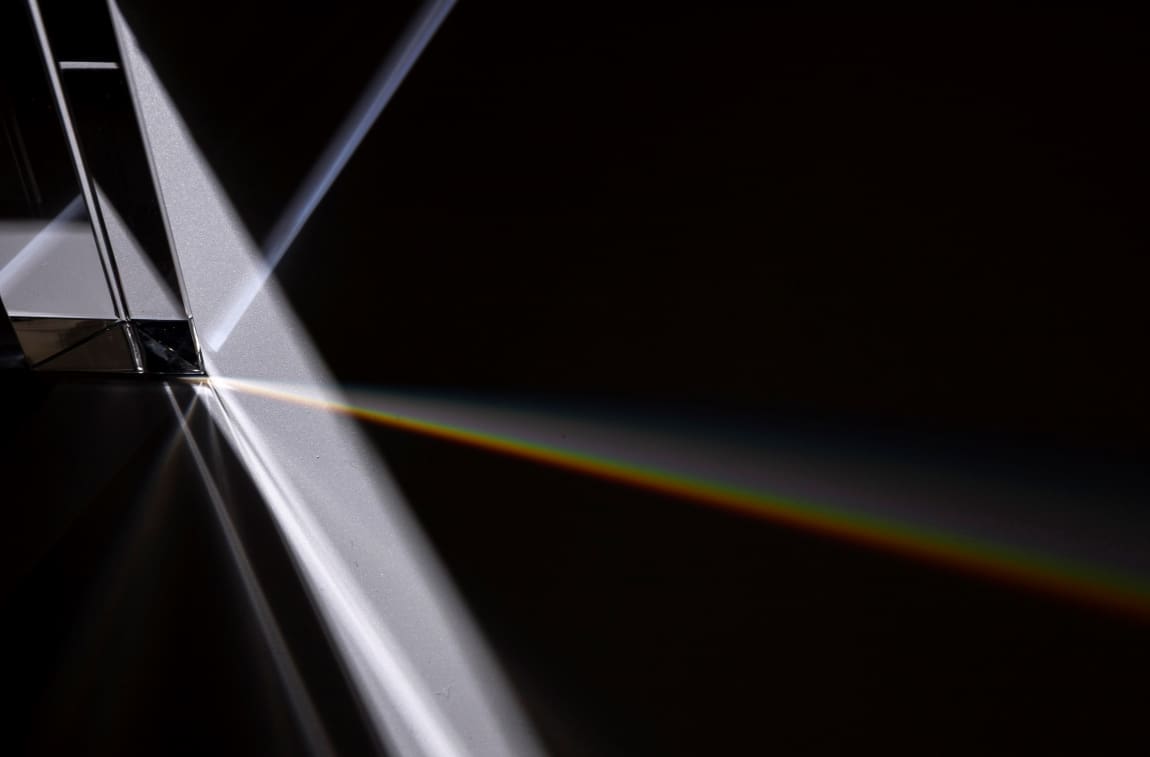Researchers at Osaka University study the impact of carbon impurities on the quality of gallium nitride crystals, and determine the threshold concentration that starts to significantly impact their light-emitting efficiency.

Credit: Koshi Sano, DOI: 10.1063/5.0207339
The wide availability of light-emitting devices (LEDs) for consumer use has led to a dramatic decrease in the cost of lighting our homes and other buildings. This is owing to the much higher efficiency of LEDs in converting electrical energy into light when compared with incandescent or even fluorescent bulbs.
However, the technology required to reproduce pleasing color balances can be difficult, especially for white and blue light. Gallium nitride (GaN) LEDs have enjoyed wide adoption for this purpose, but these devices can suffer from reduced efficiency due to intrinsic impurities or defects. These flaws can act as nonradiative recombination centers (NRCs), which cause excited electrons to relax without releasing light, thus wasting their energy.
Having a better understanding of how impurities such as added carbon atoms impact the amount of light emitted can help with future innovations in LED technology.
Now, in a study recently published in the journal Applied Physics Letters, researchers from Osaka University evaluated the efficiency of high-purity GaN crystals using nondestructive and non-contact testing. They showed that decreasing the carbon concentration can increase the amount of light emitted.
“Improvements in GaN manufacturing have made large carbon impurities less impactful, which means future gains in efficiency will likely come from managing point defects,” lead author of the study, Koshi Sano says.

Credit: Koshi Sano, DOI: 10.1063/5.0207339
For this study, samples are placed inside an “omnidirectional” sphere that allows nearly all of the emitted light to be captured. When a laser excites photoluminescence, a spectrum of the resulting light as function of wavelength can be captured.
The researchers find that when the concentration of carbon in the sample is low, the most important NRCs are intrinsic defects in the material, such as atomic vacancies in the atomic lattice. However, above a threshold carbon concentration of about 3.5 × 1014 per cubic centimeter, the carbon atoms themselves become more important for dissipating energy. The measured internal quantum efficiency, which counts how many excited electrons create photons, for one sample is 21.7%, which surpasses the previous best value of 14.2%.
“Developing more efficient optical and electronic devices that require less energy consumption is essential for promoting a sustainable society,” says senior author, Kazunobu Kojima. The authors believe that this research can help guide future development efforts for even more efficient lighting and power electronics solutions.
More information: K. Sano, H. Fujikura, T. Konno, S. Kaneki, S. Ichikawa, K. Kojima, ‘Switching of major nonradiative recombination centers (NRCs) from carbon impurities to intrinsic NRCs in GaN crystals’, Applied Physics Letters (2024, vol. 24 Iss 23); DOI: 10.1063/5.0207339. Osaka University – Press Release. Featured image credit: Freepik




